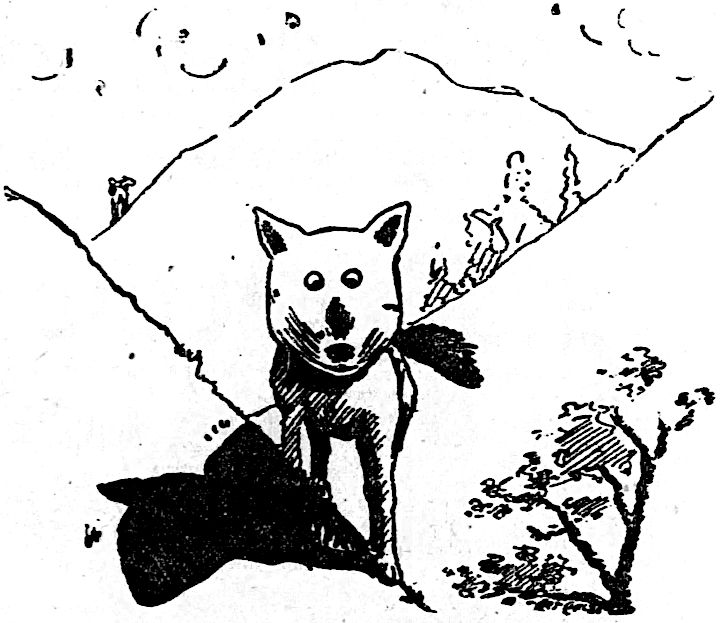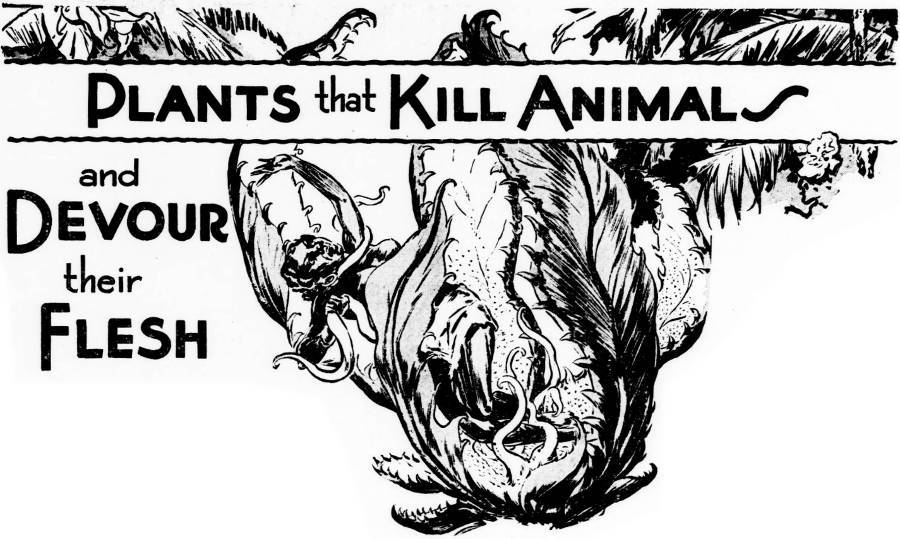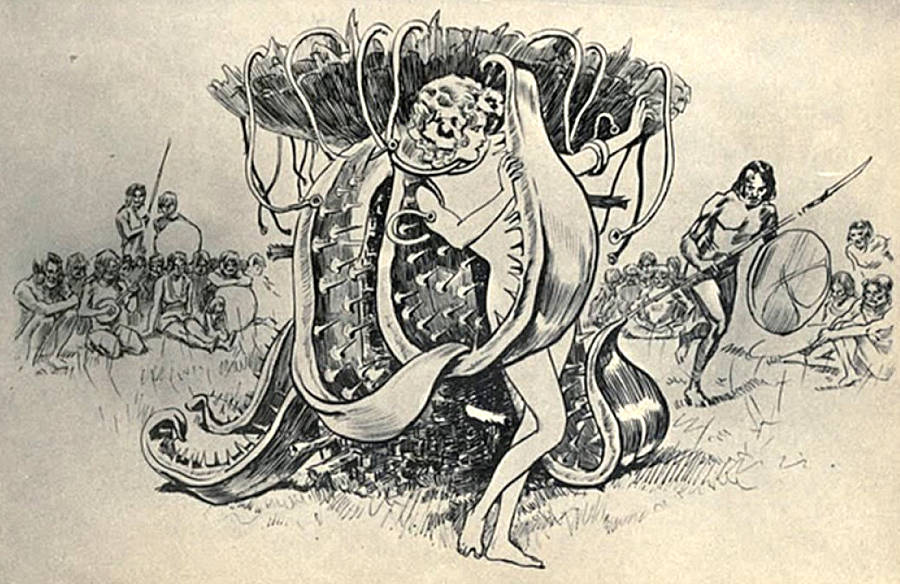NOTE: was going to post this with the YARNS of the BIG WOODS, but found so much more info that it warranted its own post.

Pulp Action from the Wild West through the Dirty 30s and More.
NOTE: was going to post this with the YARNS of the BIG WOODS, but found so much more info that it warranted its own post.

Header image for a 1933 article in the Evening Star (Washington DC)
WHEN an animal bites a plant, that is hardly news. Animals are doing that all the time: Cows and caterpillars, mice and men; they’d die very soon if they didn’t. But when a plant bites an animal there may be an interesting story in it. There are, indeed, a great many interesting stories that might be told of plants that eat animals, in spite of the fact that there are not many such plants, and that the most widespread and sensational of such stories aren’t so.
The tales about the man-eating tree of Madagascar are about the most completely hardy perennial species in all popular pseudo scientific literature, and also about the most completely unproved. They go with the similar yarns about the deadly upas tree of the East Indies—the tree that was said to knock down men and animals with its mere poisonous breath.
Both the Madagascar monster and the poison scented upas must go the way of all myth…
It is from seven to ten feet high and something like a grape fruit in shape, with rough, ugly tendrils stretching out in all directions. The trunk is black and hard as stone.
At the top of. the tree are six palpi, six feet high, that rear straight up and twine and whirl about incessantly. There is a cup also at the top which contains a clear, appetizing looking fluid. But alas for him who drinks it. He becomes peculiarly crazed and unable to get down.
Then it is that the whirling palpi twine themselves slowly but surely about the helpless man until all life is gone. This species of tree is naturally avoided as a deadly serpent would be, and the natives consider that it is actually alive and possessed of an evil and terrible spirit. (Arizona Republican, October 19, 1913)
 Sacrificed to a man-eating plant. American Weekly. September 26, 1920
Sacrificed to a man-eating plant. American Weekly. September 26, 1920
West Superior, Wis.. July 20.—On a steep, rocky bluff overhanging a narrow inlet of the Lake of the Woods, about two and one half miles from the mining village of Rat Portage, Ontario, stands one of the most freakish objects to be found anywhere in the world. It consists of a ledge of solid granite which bears a most grotesque resemblance to a human head, its cavernous mouth partly open, its features distorted with a horrible grin. Rude art has supplemented nature in perfecting the resemblance. This monstrosity is commonly known as “Devil’s head,” but is also called “skull rock.” It is about twenty feet high above the bluff, and about twenty-one feet in width at the widest part. Ears, eyes, and a mouth are plainly visible —the latter appearing in the form of a cave, which extends back in the stone about ten feet, and then, like a veritable throat, shoots down a considerable distance into the hill on which it rests. Continue reading “Skull Rock, 1897”
Using a tripod to shoot Christmas lights at city hall, Leonard & Wilfred Lamoureux got an unexpected surprise
The two were suddenly astounded to see a “bright bright blue light” drop straight down from the sky. It became larger as it did and so they were able to observe the source of the light as an object that Leonard described as “two saucers” open ends facing each other, glowing bright blue. The object then moved “dead straight” horizontally across the sky. When it just appeared to clear the flagpole on the roof of the City Hall it came to an almost dead stop and Leonard clicked the shutter on the camera. The object then shot straight back up into the sky. “They never seen anything fly so fast!” This scared them to death and they ran from the scene. The object made no sound.
Source: ufobc.ca